4.4- Visual Arts in the Classical Era
The first half of the 1800’s was much different than the later half
Rococo style dominated the art world until about 1775, then in 1785 there was a clear shift to a new style of painting: Neoclassical style
Rococo
[audio:rococooverview.mp3]- Characteristics are very similar to Rococo Architecture
- Pastel Colors
- Curving forms
- Light subject matter, emphasis on pleasure
- Fetes galantes
- References to Greek and Roman mythology
A reflection of the tastes of the aristocracy
More details about the French Rococo Era – video included
The French Artists
Jean-Antoine Watteau 1684-1721
httpv://www.youtube.com/watch?v=Vp10y0OZGfU
- Studied with Peter Paul Rubens
- Ruben’s sensuous style was redefined by Watteau
- Most noted for his fetes glantes
- Most popular work – Pilgramage from Cythera https://teachers.sduhsd.k12.ca.us/ltrupe/ART%20History%20Web/final/chap19BaroqueRococo/Watteau-Pilgrimage%20from%20Cythera.jpg
François Boucher 1703-1770
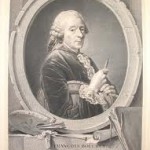
httpv://www.youtube.com/watch?v=fp7Dop66nTE&feature=related
- Favorite painter of Madame de Pompadour, mistress to Louis XV
- Appointed as director to the French Academy
- His color choices were described by friends as “rose petals floating in milk’
- His popular subject was nudes
- Popular work — Bath of Diana
Jean-Honoré Fragonard 1732-1806

httpv://www.youtube.com/watch?v=yH2EtfREKCQ&feature=related
- Student of Boucher
- Rapid brushstrokes, at times completing works in an hour
- Overtly erotic subject matter
- Patronized by Madame du Barry — last mistress of Louis XV
- Most popular works — The Swing and The Meeting
Élisabeth-Louise Vigée-Le Brun 1755-1842
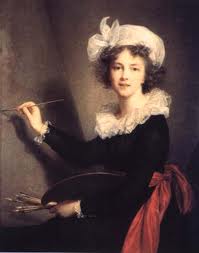
httpv://www.youtube.com/watch?v=R7i_V1Z5nr8
- Child prodigy
- Supported her family by painting from the time she was 15
- Popular with the aristocracy, including Marie Antoinette
- Fled France to escape the Reign of Terror
- Published 3 volumes of memoirs — great insight into the era
- Popular works — The Artist and Her Daughter
English Artists
Sir Joshua Reynolds 1723-92
- A leading portrait painter of London society
- First president of the Royal Academy of London
- Frequently painted aristocratic ladies in a gracious and refined manner
- Popular work — Lady Elizabeth Delme and Her Children
httpv://www.youtube.com/watch?v=PKQZjuC-hyo
Thomas Gainsborough 1727-88
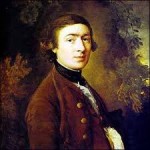
httpv://www.youtube.com/watch?v=2epFztJ0vf8&feature=related
- Portrait and landscape artist
- More money in portraits
- Rival of Reynolds
- Popular work — Blue Boy
William Hogarth 1697-1764
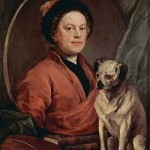
httpv://www.youtube.com/watch?v=w7Xv9lHezek&feature=related
- Painted series of pictures, like scenes from a play
- Painted as a social critique — satirizing the decadent aristocracy
- Made engravings of his paintings and sold black and white prints
- Popular work — Marriage a la Mode
- Link to a marvelously informative supplementary video:
httpv://www.youtube.com/watch?v=xbn0F6_gFR4&feature=related
Neoclassical Style
[audio:neoclassicaloverview.mp3]Traits of Neoclaccism
[audio:neoclassicaltraits.mp3]- Moral virtue
- Patriotic self-sacrifice
- Goodly deeds
- Roman Ideals
Subject matter of:
- Roman stories of virtuous behavior
- Heroism
- Tributes to self-sacrifice
Characteristics:
- Somber
- Linear
French Artists
Jacques Louis David 1748-1825
- Stark, linear and austere paintings
- Themes from Classical antiquities
- Moral Messages
- David’s art became associated with the French Revolution
Then he focused on his new hero – Napoleon - Popular works:
Jean-Antoine Houdon 1741-1828
- Created sculptures of some of the most important figures of the Enlightenment
- His busts were very intimate and natural portrayals
- His sculptures were all commissions
- Most Popular work — George Washington
English (International)
Angelica Kauffman 1741-1807
- Swiss Born
- Helped to found the British Royal Academy with Sir Joshua Reynolds
- Known for her history paintings
- Popular work — Cornelia Pointing to Her Children as Her Treasures
Americans
Benjamin West 1738-1820
- One of the first American painters to gain an international reputation
- Abandoned the Neoclassical style of portraying Greek and Roman dress
- Painted historical and religious subjects
- Popular work — Death of General Wolfe
John Singleton Copley — 1738-1815
(please peruse this wonderful site with an engaging presentation of both the artist and his important work)
https://www.nga.gov/feature/watson/story1.shtm
- American born — worked in England
- History paintings
- Innovative revisions of earlier paintings
- Popular work — Watson and the Shark

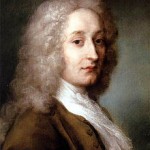
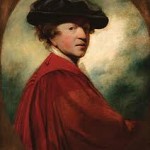

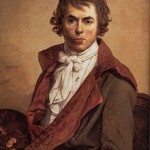

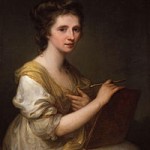
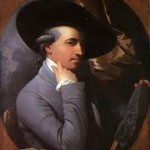
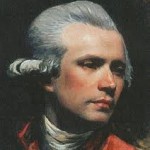
 |
|
No. 1 — December 20th, 2010 at 11:56 am
I guess artistic value evolves to reflect the current needs and wants. Much of Western Art was naturalistic, which was convenient for the time, but began to wane after the introduction of the camera.
No. 2 — March 8th, 2013 at 7:49 am
[…] Kljaich, Lisa. “4.4- Visual Arts in the Classical Era.” Art Music Theater F200 RSS. Kljaich, Lisa (UAF), n.d. Web. 06 Mar. 2013. <https://amtf200.community.uaf.edu/2009/04/24/03-visual-arts-2/>. […]
No. 3 — March 23rd, 2013 at 6:40 am
[…] in a Straw Hat shows another characteristic of Rococo artwork, which is the soft, curving lines (source). Her arm and hand are placed at a soft curve and the lines of her hat and face are all delicate, […]
No. 4 — May 7th, 2013 at 8:11 am
I have been browsing on-line greater than 3 hours today, yet I never discovered any attention-grabbing article like yours. It’s lovely value sufficient for me. In my view, if all site owners and bloggers made just right content material as you probably did, the internet will likely be much more useful than ever before.
No. 5 — May 14th, 2013 at 8:24 pm
You can take this course for credit through ELearning at the University of Alaska in Fairbanks.
No. 6 — October 19th, 2013 at 6:02 pm
[…] https://amtf200.community.uaf.edu/2009/04/24/03-visual-arts-2/ […]
No. 7 — October 19th, 2013 at 8:04 pm
[…] University of Alaska. Retrieved from https://amtf200.community.uaf.edu/2009/04/24/03-visual-arts-2/ […]
No. 8 — October 28th, 2013 at 2:28 pm
[…] https://amtf200.community.uaf.edu/2009/04/24/03-visual-arts-2/ […]